When planting your Orange or other citrus trees, the big things to remember are how to plant and how to take care of your budding fruits. If you’re growing Oranges from seeds, collect seeds from a neighbor’s tree or even shop-bought Oranges by all means and enjoy your resulting Orange trees. Any seed contains genetic information for the plant from which it came and can grow.
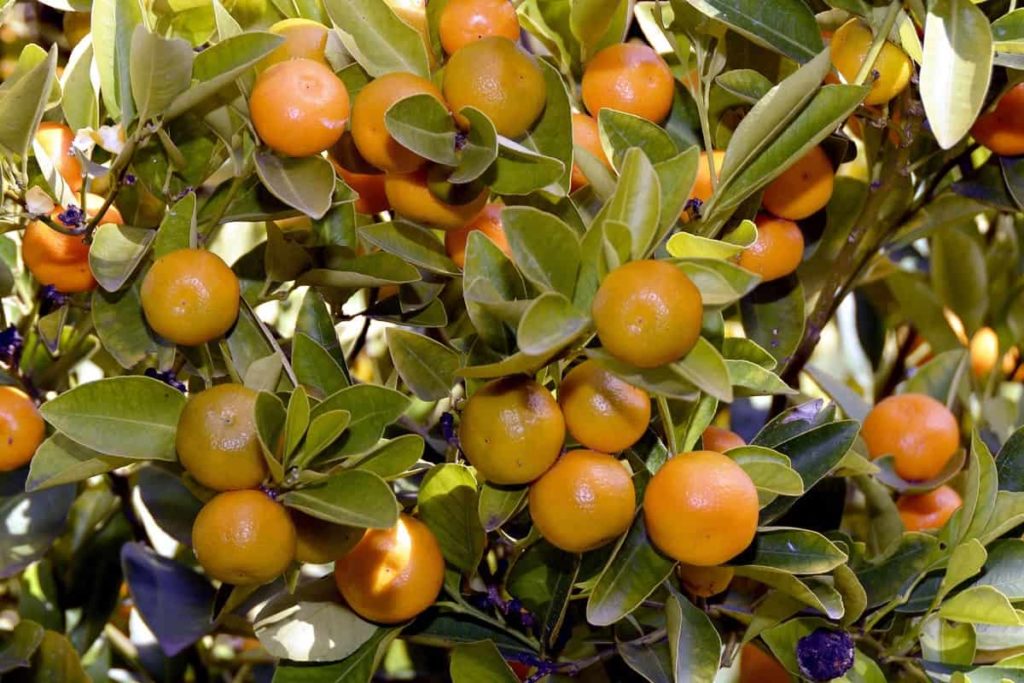
All seed requirements are adequate temperature and moisture content, and most seeds will begin to germinate and grow. Save seeds the next time you eat an Orange, Lemon, or Mandarin. You may not have the patience to turn it into a true, fruit-bearing Orange tree, but you can get at least one attractive plant.
How to grow Oranges from seed to harvest
How long does it take to grow an Orange tree from seeds?
- The Orange tree is an evergreen tree with a productive age of 50 to 60 years. Some well-maintained Orange trees can live up to 100 years or more. It is a flowering tree and can grow between 16 and 50 feet in maturity.
- The maintenance of Orange trees is not complicated. Following a few basic steps while taking care of an Orange tree will keep your tree healthy and potentially increase fruit production.
- They not only produce amazing smelling leaves, but mature trees also bear fruit. Orange seeds are easy to germinate, but a tree grown with Orange seeds can take up to seven to fifteen years to bear fruit.
- The time for fruit to ripen depends on the type of citrus and cultivar. Some Oranges varieties can take up to 15 months to fully mature, while others only need 8 to 12 months.
- The Orange fruits will not ripen off the tree, so avoid picking them too soon. The best indicator of ripening is taste. Harvest the fruit by cutting it from the pruning shears or pulling the stalk of the fruit from the tree.
Can you grow an Orange tree from the seeds from an Orange?
- Citrus often comes true from seed; that is, a tree grown from seed will produce fruit like a parent tree. But not always. While growing an Orange tree from seeds is fun, the taste can be frustrating, especially after such a long wait for fruits.
- You should soak the Orange seeds in water overnight and plant them 1/2 inch deep in moist potting soil. You must cover the pot with a plastic bag or wrap it and place it in a warm and sunny place for a few weeks until the seeds begin to grow. Then, you must remove the plastic but keep the pot close to the warm and sunny window as the seedlings grow.
In case you missed it: Best Fertilizer for Orange Trees: Organic, NPK Ratio, Management, Schedule, How and When to Apply
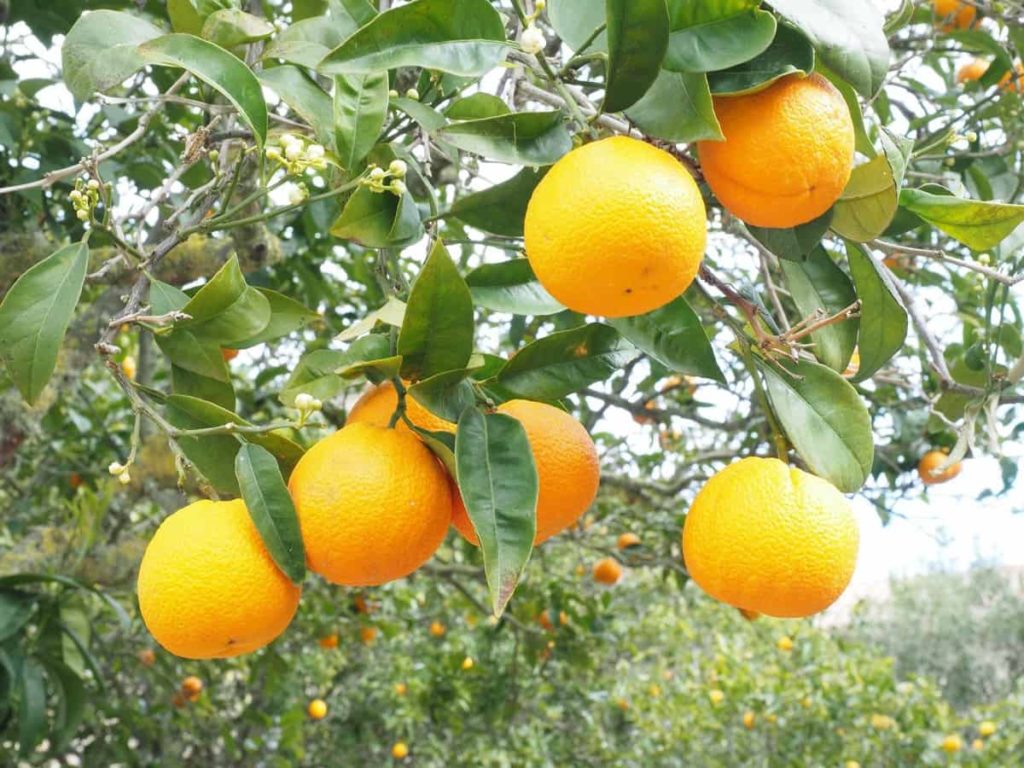
What is the best month to plant Orange trees?
- Orange trees require time to adapt to their new environment. The best time to plant Oranges is Early to mid-spring because they have to establish themselves in the soil with warm weather throughout spring and summer. Your soil should be well drained and fertile.
- Oranges seeds should be planted six weeks after the last frost date when the air and soil temperatures are consistently warm.
- Orange trees need a location with full sun and well-drained soil. They need space to expand at least 15 feet away from other trees, power lines, and buildings, even beyond septic tanks and drain fields. Planting against a south-facing wall in cold climates provides extra warmth.
Do you have to dry out Orange seeds before planting?
- The Orange seeds need to mature properly, the seed coating needs drying and cure, and they need a period of rest before planting.
- Orange seeds grow best when sown fresh and should not be allowed to dry completely. You should dry the excess moisture on the seed coat to reduce the possibility of fungal infection after sowing.
- Once you have removed the Orange seeds from the Orange, soak them off any membrane that may be attached. Never plant dry seeds, as soaking removes any growth inhibitors that may hide below the seed surface. The Orange seed planted in the yard needs loose soil.
Can you grow an Orange tree from a store bought Orange?
- Anyone who peels and eats an Orange knows the fruit can contain a dozen or more seeds. The big news is that most of the seeds from Oranges can grow into plants; you can also grow purchased Orange seeds.
- You can use potting soil when planting indoor or container Orange seeds. Once you plant an Orange seed in the container, cover the container with a plastic bag until it sprouts. Then move the container to a sunny place until it is ready for transplantation. Water twice a day once transplanted, but do not soak the soil.
- To start the citrus trees indoors from the seeds, remove the seeds from the desired fruit. You should soak the Orange seeds in water overnight and plant them 1/2 inch deep in moist potting soil. Until the seeds begin to grow, place them in a warm and sunny place for a few weeks.
In case you missed it: Orange Gardening For Beginners, How To Start, FAQs
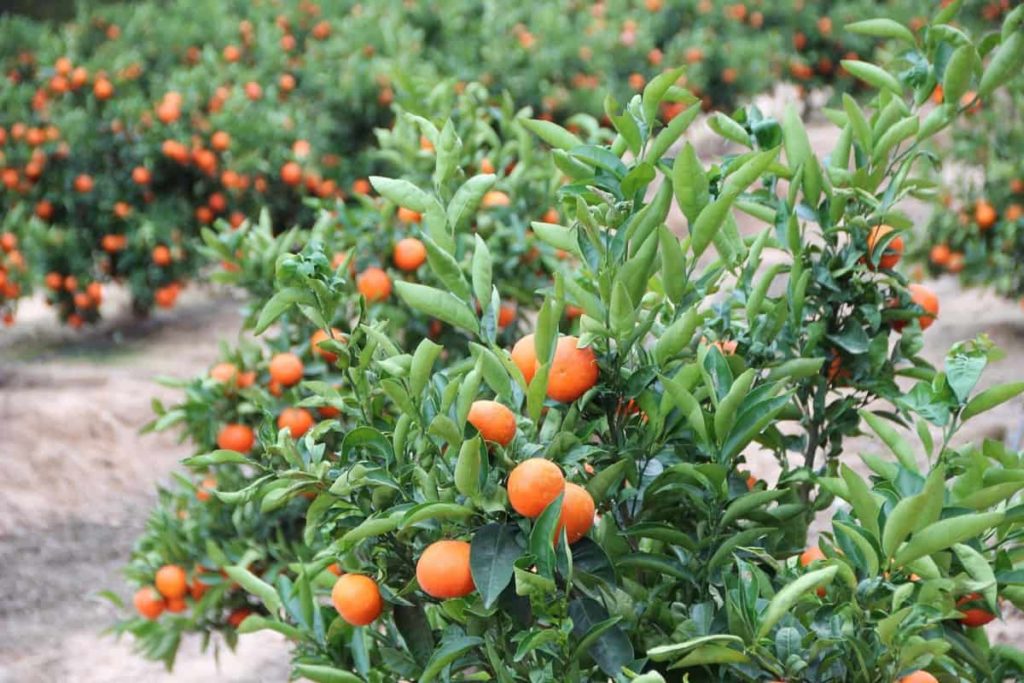
How many Orange seeds should I plant?
- Orange seeds lose viability as soon as you remove them from the fruit, so ensure you’re ready before cutting Oranges. Take seeds from fully ripe fruit with a solid Orange color and no hint of green. Collect seeds from healthy, spotless fruits with no signs of rot or mold.
- You should use at least four Orange seeds to increase the odds of successful germination and wash them thoroughly and dry them while preparing the pot.
Do Orange trees need a lot of water?
- You should water a young Orange tree every few days, but you should water a more mature one weekly to about once a month. You should not water your Orange tree during the rainy season.
- After the first true leaves emerge, the Orange trees with seedlings take advantage of the daily misting with water.
- In addition, the newly planted trees should also have a soil ridge around the base of the plant, designed to ensure that the roots have a good water supply. The Orange tree typically needs an average of 1.5 inches of water per week as it grows.
- Overwatering the Orange tree can make the leaves pale green or yellow. This is because the discolored roots are full of water, unable to distribute nutrients, or because the roots have started rotting. Over time, colorless leaves may fall.
- You should control irrigation, and 9 liters of water per day is enough for one-year-old Orange trees. For four-year-old trees, the water requirement goes up to 40 liters per day, while for trees ten years old or older, 105 liters of water is required.
Should you mulch around Orange Trees?
- Orange trees can be over-mulched or mulched near stems and larger roots. Bare soil with only no plantings and no mulch for a distance of 2 to 4 times the diameter of a citrus tree trunk and at least several inches to a foot or more from major root buttresses and surface roots.
- Maintaining a layer of loose organic mulch on the soil is beneficial under citrus trees. Place a two or three-inch deep layer of wood chips or compost under the tree and allow the dead leaves to accumulate.
What is the best fertilizer for Orange trees?
- Orange tree growers often supply 2.5 to 3.5 kg of P2O5 to each adult tree for 4-5 consecutive years. In many cases, you can also add K2O of 1.5 to 3 kg to each adult tree for two consecutive years.
- Citrus plants are hungry plants, and you must feed regularly during the growing season (spring and summer). You should feed them with more potassium feed to produce good fruit.
- Fertilize Orange trees with fruit-specific or phosphorus and potassium fertilizer at the beginning of the fruit period to encourage better fruit and ripening. Orange trees need additional resources to bear fruit, and large, sweet fruits will endure if the right nutrients are available.
- You should fertilize your Orange trees once every two months during active growth (spring and summer) during the tree’s dormant periods (autumn and winter) once every two to three months.
- Orange trees are generally the most preferred nitrogen fertilizers to promote growth and production but can occasionally lack magnesium in their diet. When this happens, Epsom salt, also known as magnesium sulfate, provides the necessary micronutrient.
In case you missed it: Growing Orange in Pots from Seed – A Full Guide
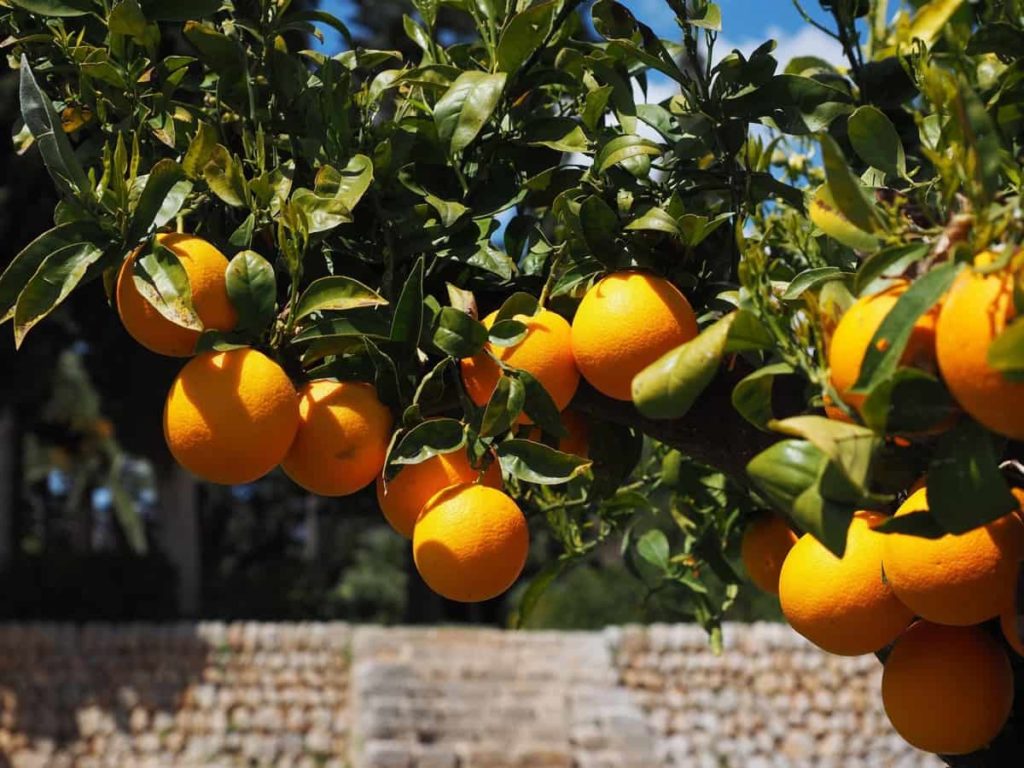
Do you need two Orange trees to produce fruit?
- Standard-sized and dwarf Orange trees contain male and female parts, making the Orange tree self-fertile and able to produce fruit that requires pollination and fertilization.
- Although Orange flowers are fertile and theoretically do not require bees to pollinate and set fruits, bee pollination activity has significantly increased fruit set and yield.
- Most Orange varieties are self-fertile, so only one tree is usually needed for fruit production.
How do you encourage an Orange tree to produce fruit?
Every three or four years, remove the branches from the canopy so that you can see sunlight under the tree. A tree canopy that receives enough light encourages good production. Removing only one part of a branch, called heading back, encourages new growth at the expense of fruits and flowers.
What kind of soil do Orange trees like?
- Orange trees prefer a soil pH of 6.0 to 7.5, which ranges from slightly acidic to neutral. In addition, orange trees prefer light to medium-textured soil, which has good drainage and is free of stagnant water.
- Orange trees thrive best in naturally rich soil. If the soil is good, do not add amendments like compost or peat moss to the soil. Excess fertilizer increases leaf growth but produces very few flowers and fruits. Once the tree starts growing, scratch the citrus fertilizer in the top two inches of the soil.
- A soil requirement for an Orange tree is good drainage. Orange trees tolerate dry soil conditions but do not survive the heavy clay of wet soil. Since most of the tree’s roots are 2 to 3 feet above the ground, it is sensitive to excess water. Dry the soil between the water to improve the trees’ growth and prolong the tree’s lifespan.
How can I make my Orange tree grow faster?
- Compacted soil does not have the drainage capacity necessary for the successful growth of Orange trees; Oranges require proper moisture movement within the topsoil and the underground structure of the soil. Any water trapped above or below the ground can cause disease inside an Orange tree.
- If the tree produces flowers but no fruits, it is possible that the buds are not flowering. Shake the branches once while the tree is in the bud to loosen the pollen and let it fall on the pistil. You will have to do this regularly over several days.
- One of the essential things you can do to encourage Orange tree growth is to ensure you provide enough light for your tree. Lighting helps the tree generate the energy that is needed to provide energy for fruit production. Plant it in full sunlight to ensure the tree gets enough light.
Can Oranges grow in pots?
- Growing Orange trees in containers are the easiest and surest way to protect them from potential cold damage. The key is the selection of the best Orange trees suitable for pots, followed by size maintenance through proper fertilization, watering, and pruning.
- The best Orange trees for container gardening are dwarf cultivars. When planting in a pot, you should choose a dwarf Orange variety, such as Dwarf Valencia or Dwarf Navel. If you have short sunspots in the garden, grow citrus in pots that can be moved to take advantage of changing sunlight patterns. It is better to put extra effort into soil preparation in heavy clay.
In case you missed it: How to Grow Apples for Beginners: A Guide to Planting to Harvesting
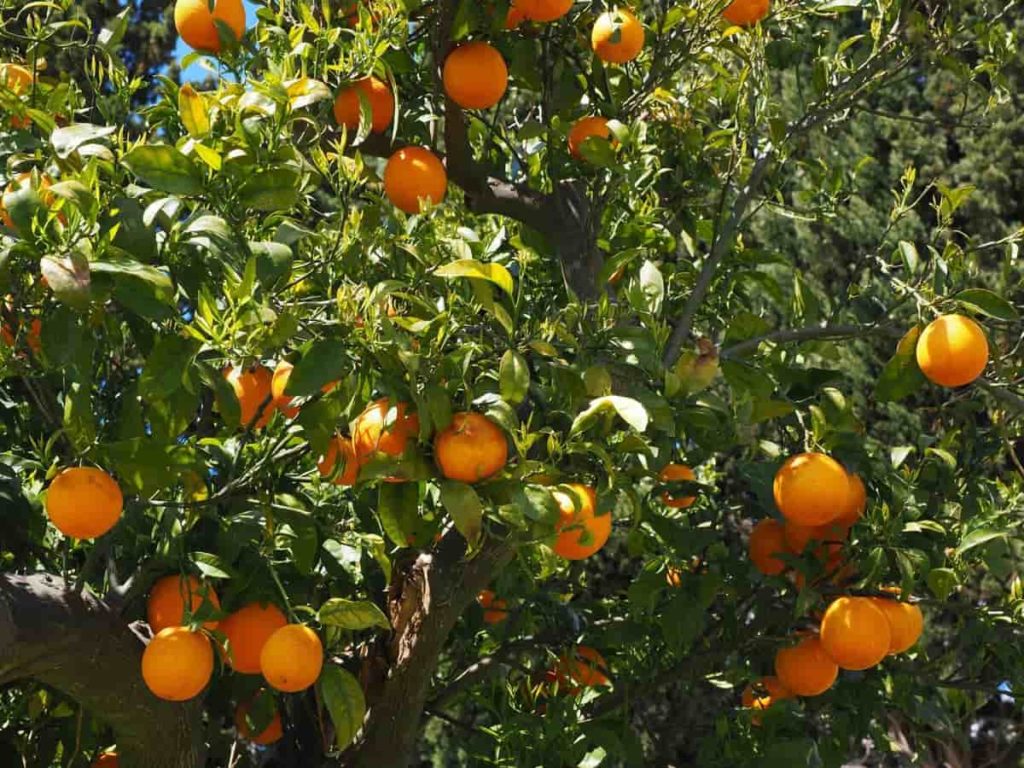
How many Oranges do you get from one tree?
- You will get 200 to 350 Oranges from an average healthy and mature Orange tree. However, after years of practice, experienced Orange tree farmers can harvest 400 to 600 Oranges per tree.
- Orange trees are evergreen but do not produce fruit continuously throughout the year, unlike many Limes and Lemons. Each tree produces a fruit crop every year the fruiting cycle is up to 10 months for some varieties.
Do Orange trees need a lot of sun?
- Orange trees require full sunlight to grow well and produce flowers and fruits. Full sun is defined as having at least 6 hours of direct sunlight. When growing citrus trees indoors, choose a place near a window or glass door on your house’s south or southwest side.
- You should place your Orange plant on a south-facing window sill, as it provides the right amount of light. Citrus plants like a fairly humid environment.
- Both standard and dwarf Orange trees thrive in full sunlight but can tolerate some shade. Although Oranges prefer to stay in the sun throughout the day, they can still live healthily if they get 6 to 8 hours of sunlight daily. Exposure to more sunlight makes Orange trees healthier, gives them thicker leaves, and helps them produce more fruit.
Are coffee grounds good for Orange trees?
- Coffee grounds replace the nutrients available in the soil, including Orange trees, which include phosphorus, magnesium, nitrogen, copper, and potassium. You can progress the soil structure by adding coffee grounds to the soil. They can rot when placed directly on the ground. If your soil needs better nutrients and slightly more acidity, dig its base about 6 to 8 inches deeper into the surrounding soil.
- Adding coffee grounds can compete with some of the other fragrance choices you have in the garden, creating an unpleasant smell. If your Orange tree needs nutrients added by the grounds, make compost tea, and suggest break down.
Should I prune my Orange tree?
- Cutting an Orange tree is generally unnecessary except for removing damaged or diseased branches. The fruit doesn’t need to be thinned unless there’s too much.
- The best way to keep them small is to prune them out. Pruning is essential in the development of small sizes. As intimidating as it may be, don’t discourage the tree’s final size from being small according to your needs.
- The citrus trees are best pruned before blooming in early spring or immediately after the fruit is set in late spring. You would avoid pruning in late summer or early autumn. Late pruning can encourage tender growth, and this new growth suffers a loss of frost damage because it hasn’t hardened.
Why are my Oranges turning yellow?
- A lack of nitrogen can also make your Orange trees yellow. This causes a yellow color called nitrogen chlorosis and is common when you feed your Orange tree a lot of organic matter with high carbon content.
- Yellow leaves in Oranges can also be caused by iron deficiency due to high soil pH, high phosphorus, or low iron levels.
What month are Oranges harvested?
- Navel Oranges are ready to harvest from November to June. Valencia Oranges are ready from March to October. Cara Cara Oranges ripen from December to May. Clementine Oranges are produced in October as satsuma occurs until December or January.
- Wait for the fruit to be harvested until they have prepared their full color. Most Oranges ripen in December, though some, such as Valencia Oranges and Blood Oranges, ripen later. Let the citrus ripen and sweeten on the tree, as they will no longer sweeten once harvested.
How do Oranges get harvested?
- Orange fruits are generally harvested by hand, with a combined movement of twisting and pulling. Some farmers use clippers or shears and cut the stem. This is very common when fruits with very thin crust are harvested.
- The longer you leave the Oranges on the tree, the better. They start turning Orange at the end of autumn but don’t be in a hurry to pick them up. If not sure, try one and leave the rest of the crop a little longer on the tree if sour. Oranges can also turn green again in winter but are still ripe and juicy.
In case you missed it: How to Grow Tomatoes from Seeds: Starting from Scratch, A Beginners Guide to Indoors, Outdoors, and in Pots
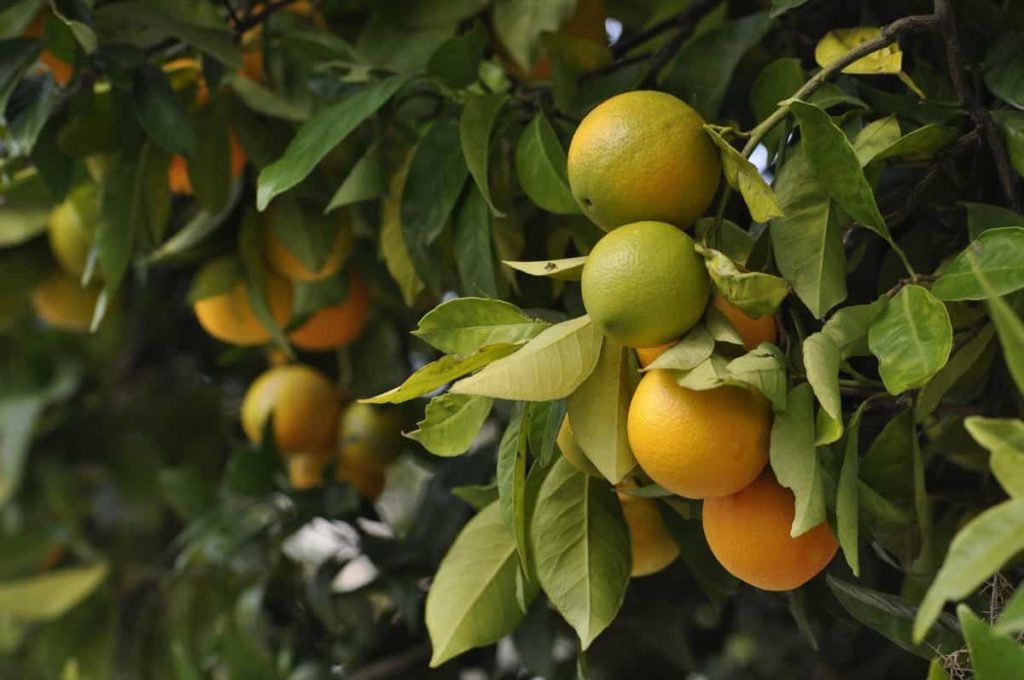
Do Oranges ripen more after they are picked?
- Oranges do not ripen after picking; they should stay on the tree to produce sweetness, which can take months. Sample one or two fruits to decide to ripen, as the color of the peel can vary according to the temperature, and if the Oranges are not ripe, try again after 1 to 2 weeks.
- Once picked from the tree, the citrus fruit is not sweet. Although the color may change after the fruit is picked, becoming more Orange, the sweetness won’t grow once it’s picked. Just make sure your Oranges stay out of direct sunlight. The sun’s heat can speed up the ripening process and cause the fruit to deteriorate before giving it a chance to enjoy it.
- After the fruit reaches mature size, Navel Oranges can stay on the tree for three to four months. In the meantime, the taste and color of the fruit can change. The best indicator of ripening is taste. Cut the fruit by cutting it from the cutting or pulling the stalk of the fruit from the tree.
Why won’t my Oranges ripen?
- The most common reason citrus fruits fail to ripen is the lack of sunlight. Trees planted under large trees or near buildings may not get enough sunlight for their fruits to ripen. Even trees planted too closely can fail to produce ripe fruit.
- The green color is produced on the peel of an Orange to protect itself from sunburn. Green does not affect the taste. Some farmers believe citrus with regreening may contain more sugar than dark Orange fruit.
Conclusion
Most fruits are grown from trees grown from cuttings that are grafted onto another tree. Growing Orange trees from Orange seeds mean you can’t get the same delicious Orange that you ate to get seeds in the first place. This is because seed-grown plants are not as genetic material as the parent tree.
However, citrus often produces genetically similar seeds to the parent tree, but it takes so long to get the fruit that you may have to wait for years before you know for sure what you’re going to get. The phase of a young Orange tree can take several years before fruiting. It can still be beneficial to grow any citrus tree from seed. Even if your citrus tree never bears fruit, you can still enjoy its bright green leaves, dramatic appearance, and fresh aroma.
- How to Grow Hibiscus from Flower
- Plantation Ideas for Home Decoration: A Beginners Guide
- Flower Garden Designs and Layouts for Beginners
- Planting and Spacing Techniques in Papaya: A Beginner’s Guide
- Growing Gold: Essential Techniques for Planting Pineapples
- How to Make Kalanchoe Plant Bushy: Home Remedies and Solutions
- 11 Reasons Why Your Gardenia is Not Blooming: Home Remedies and Solutions
- Eco Elegance: The Guide to Designing a Drought-Tolerant Landscape
- Gardening on a Slope: Strategies for Hillside Landscaping
- Nourish and Flourish: Top Organic Mulches for Thriving House Plants
- Everything You Want to Know about Indian Mogra Flower: Discover Uses and Growing
- Green Thumb Success: Expert Tips for Cultivating Greenhouse Pumpkins All Year Round
- Maximize Growth & Flavor: The Ultimate Guide to Companion Planting in Herb Gardens
- How to Control Rhododendron Problems Naturally: Home Remedies and Organic Ways to Fix Them
- Natural Magic: The Remarkable Benefits of Cinnamon for Plants
- Best Steps to Revive Dying Tulip with Natural and Organic Treatment
- 10 Reasons Why Your Angel Trumpet is Not Blooming: Remedies and Treatment
- How to Fix Periwinkle Leaf and Flower-Related Problems: Natural Remedies and Solutions
- How to Fix Zinnias Leaf and Flower Problems: Discover Natural and Home Remedies
- Organic Steps to Induce Lemon Tree Flowers: A Comprehensive Guide
- Bloom Booster: Crafting the Perfect Homemade Bougainvillea Fertilizer
- Optimizing Growth: A Guide to Applying NPK Fertilizer for Potted Plants
- 10 Best Homemade Fertilizers for Rubber Plant: DIY Recipes and Application Method
- How to Boost Female Pumpkin Flowers: Effective Steps for More Flowers and High Yields
- Transform Your Indoor Garden: Top Benefits of Pink Salt for Houseplants
- 10 Best Homemade Fertilizers for Peacock Plants (Calathea): Easy DIY Guide
- Unlock Blooms: 9 Reasons Why Your Potted Chrysanthemum is Not Blooming
- 8 Reasons Why Your Potted Hibiscus is Not Blooming: Fix it with Simple Solutions
- Unlock Blooms: 9 Key Reasons Your Potted Frangipani Won’t Flower
- 10 Reasons Why Is My Ice Plant Not Blooming: Remedies and Treatment
- 10 Reasons Why My Potted Hydrangea Not Blooming: Treatment and Remedies
- 10 Reasons Why is My Wisteria Not Blooming: Remedies and Treatment
- 10 Reasons Why is My Goldfish Plant Not Blooming: Remedies and Treatment
- Maximize Your Space: Ultimate Guide to Balcony Gardening with Grow Bags
- 10 Reasons Why Your Iris is Not Blooming: Remedies and Treatment
- 10 Reasons Why Your Anthurium Plant is Not Blooming: Treatment and Remedies